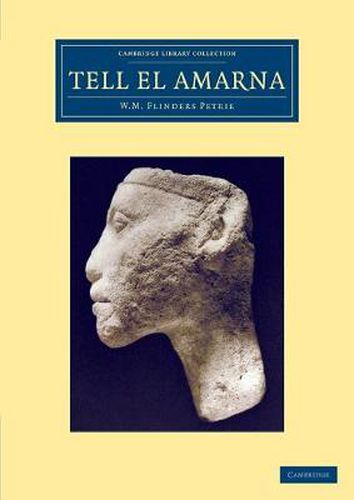Readings Newsletter
Become a Readings Member to make your shopping experience even easier.
Sign in or sign up for free!
You’re not far away from qualifying for FREE standard shipping within Australia
You’ve qualified for FREE standard shipping within Australia
The cart is loading…






A pioneering Egyptologist, Sir William Matthew Flinders Petrie (1853-1942) excavated over fifty sites and trained a generation of archaeologists. He also played a notable part in the preservation of a number of cuneiform tablets that became known collectively as the Tell el-Amarna letters. Petrie’s Syria and Egypt (1898), containing summaries, is also reissued in this series, along with many of his other publications. The present work, first published in 1894 and richly illustrated, gives an account of the work that Petrie carried out in 1891-2. It contains detailed information about both the technical aspects of the dig and the array of artefacts found, including the tablet fragments of diplomatic correspondence from the fourteenth century BCE. The chapter on the tablets is provided by Archibald Sayce, Francis Llewellyn Griffth discusses ceramic inscriptions, and the flint tools are examined by F. C. J. Spurrell.
$9.00 standard shipping within Australia
FREE standard shipping within Australia for orders over $100.00
Express & International shipping calculated at checkout
A pioneering Egyptologist, Sir William Matthew Flinders Petrie (1853-1942) excavated over fifty sites and trained a generation of archaeologists. He also played a notable part in the preservation of a number of cuneiform tablets that became known collectively as the Tell el-Amarna letters. Petrie’s Syria and Egypt (1898), containing summaries, is also reissued in this series, along with many of his other publications. The present work, first published in 1894 and richly illustrated, gives an account of the work that Petrie carried out in 1891-2. It contains detailed information about both the technical aspects of the dig and the array of artefacts found, including the tablet fragments of diplomatic correspondence from the fourteenth century BCE. The chapter on the tablets is provided by Archibald Sayce, Francis Llewellyn Griffth discusses ceramic inscriptions, and the flint tools are examined by F. C. J. Spurrell.